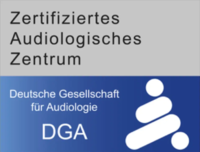About the disease
The abnormal growth of bone means the middle ear is unable to vibrate in response to sound waves, thus restricting the hearing function. This condition usually develops in middle-aged people, but the onset of symptoms often begins while people are in their early 20s. It predominantly affects women and is also more common among Caucasians. Otosclerosis can be caused by a genetic predisposition; 60% of people with this condition have relatives who have also had a similar problem. Pregnancy increases the risk of developing it in future. Viral infections and measles are also risk factors of otosclerosis.
According to the American Academy of Otolaryngology, 10% of Caucasians have some stage of otosclerosis during their life. It is much rarer in Asians and African Americans.
The early stage of this disease, when hearing loss is mild, is called otospongiosis. Later on, the condition progresses and can result in tinnitus, which is ringing in the ears. Usually, hearing loss continues to develop until the sufferer reaches their 30s and then hearing becomes relatively stable. Very rarely, otosclerosis can result in deafness. In most cases though, patients are able to preserve their hearing function, but their sensory hearing is usually damaged.
Symptoms
- Headaches
- Ringing in the ears
- Vertigo
- Dizziness
- Hearing loss
Diagnosis
- Conductive hearing loss pattern is the first indicator that can help a doctor to make the right diagnosis. Loss of acoustic reflexes, which can be tested during a general examination by an otolaryngologist, is another common indicator.
- A hearing test, which should be repeated every second or third month, can also determine whether the patient is gradually losing their hearing.
- An audiogram can precisely assess a person’s hearing ability. During this procedure, the patient wears headphones which send sound signals right into the ear. The volume of these signals is adapted to the patient’s ability to hear them.
- A CT scan can produce an image of the patient’s inner ear.
Treatment
- Medical treatment is recommended before undergoing surgery, to slow down the rate of hearing loss. This includes nutritional supplements of sodium fluoride.
- Stapes surgery includes the implantation of a prosthesis that enables sound vibrations to pass from the eardrum to the inner fluids, thus restoring the hearing function. The surgeon makes a small incision behind the ear in order to access the inner ear. The eardrum is pushed forward and the immobilized stapes bone is removed, allowing a metal or platinum prosthesis to be implanted in its place.
Overall, Stapes surgery is considered to be very safe with 90% of cases being successful. You will even be able to fly on an airplane three weeks after surgery. Other options apart from surgery include a temporal bone implant or external hearing aids.
Authors: Dr. Nadezhda Ivanisova, Dr. Sergey Pashchenko




















